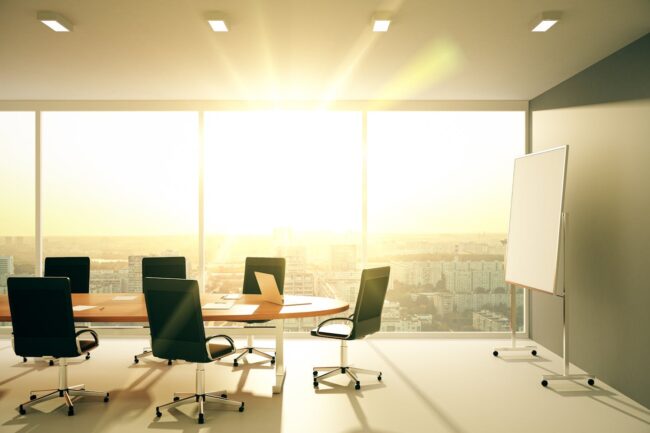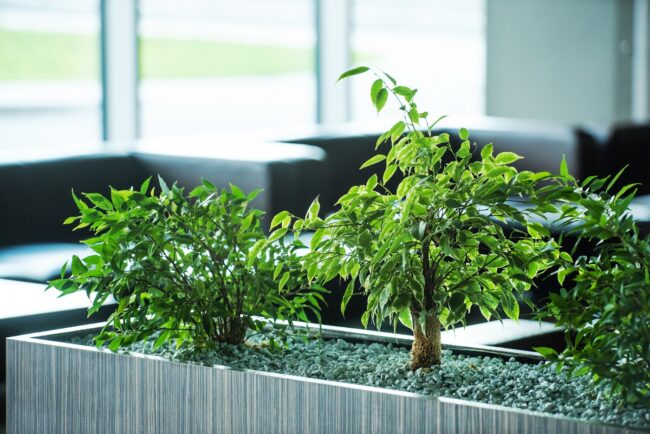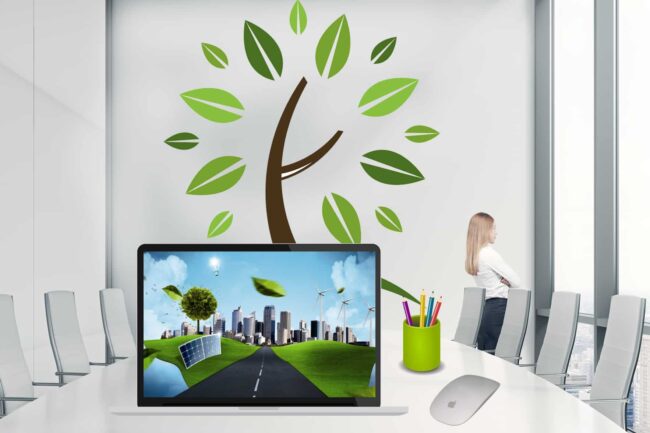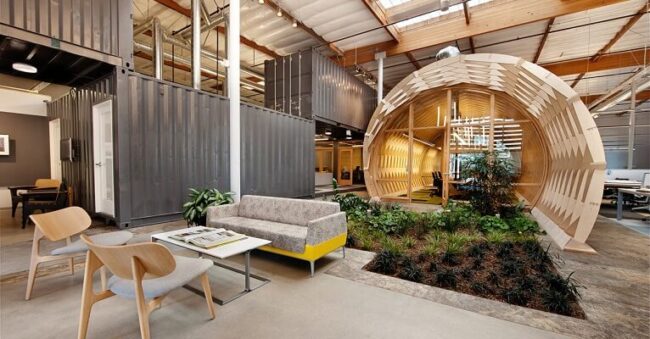Your startup just outgrew that coffee shop corner where everything began. Now you’re staring at empty office space, wondering how to make it look professional without spending venture capital money you don’t have yet. The good news? Creating an eco-friendly workspace doesn’t require choosing between looking legit and staying true to environmental values.
Smart startups figure out early that employees care about working somewhere that matches their beliefs. When the office actually reflects company values, recruiting gets easier and people stick around longer. Plus, green choices often save money in ways that add up faster than expected.
1. Scavenge Materials That Look Good

Skip the generic office furniture catalogs. Reclaimed wood makes conference tables with actual character instead of those plastic-looking surfaces everyone forgets immediately. Bamboo grows ridiculously fast and costs way less than hardwood while looking ten times cooler than particleboard.
Check out local salvage yards before hitting furniture stores. Old factory windows become room dividers that let light through. Vintage metal lockers store supplies while adding personality that clients remember. These pieces cost less than new stuff and give the space stories to tell.
Mix different textures so everything doesn’t look like it came from the same catalog. Cork boards work great with steel shelving. Recycled glass tiles catch light in ways that make cheap spaces look expensive. The trick is making everything look intentional instead of random.
2. Handle Trash Like Adults
Proper waste management makes any office look more professional. Good commercial trash cans placed throughout the space encourage clean habits while keeping common areas tidy. Separate containers for recycling, compost, and regular waste make sorting automatic instead of something people have to remember.
Office composting works even in downtown buildings. Small countertop containers collect food scraps for community gardens or commercial composting services. The key is making participation easy and odor-free through proper containers and regular pickups.
Digital document systems cut paper waste while improving organization and security. When printing becomes necessary, double-sided settings and draft quality reduce paper and toner use. Teaching employees about waste reduction creates culture changes that extend beyond work.
3. Maximize Natural Light Without Frying Everyone

Any space that receives natural light appears bigger and more costly. Desks should ideally be near windows, but keep in mind that glare may make it difficult to see computer screens. Bright walls and strategically positioned mirrors reflect whatever natural light is available in the space.
People can manage their own illumination without impacting others by using LED fixtures with dimmer controls. Lighting for particular tasks is always better than harsh overhead fluorescents. When people are truly comfortable at work, they expend less energy.
Natural light may enter interior spaces without requiring significant construction work thanks to skylights and solar tubes. Improvements that raise a property’s worth are generally highly supported by landlords, particularly when renters cover installation costs. Within a few years, the expense is typically covered by the energy savings.
4. Add Plants Without Creating a Maintenance Nightmare

Plants clean air and make people happier, but nobody wants to become the office plant babysitter. Snake plants survive neglect. Pothos vines grow in dark corners. Rubber trees make bold statements while requiring almost zero attention.
Strategic plant placement does double duty:
- Hanging gardens maximize greenery without stealing floor space needed for actual work.
- Living walls create impressive focal points while filtering air better than scattered pots.
- Desktop plants give people personal green space they can actually take care of.
- Big floor plants in corners soften harsh angles while adding life to boring spaces.
Fountains and other small water elements create background noise that drowns out distracting chatter. Stressed-out workers sometimes find solace in watching fish tanks on difficult days. Both add tranquility without requiring daily maintenance.
5. Choose Technology That Pays for Itself

Smart systems should simplify rather than complicate people’s lives. Programmable thermostats detect when people enter and depart and change temperatures accordingly. Motion sensors turn off lights in empty rooms. These gadgets pay for themselves by lowering utility expenses.
Cloud storage eliminates energy-intensive servers and allows individuals to work from anywhere. Good video conferencing equipment lowers travel costs and enables distant cooperation. The idea is to have green technology work for corporate goals rather than against them.
Modern features are not as crucial as energy-efficient office equipment. Compared to less expensive models, efficient copiers, PCs, and monitors usually last longer and use less electricity. Because it requires fewer replacements and lowers operational expenses, spending more up front often results in long-term cost savings.
6. Create Work Zones Without Building Walls
Open offices bombed because nobody thought about how people actually work. Sometimes you need total silence. Other times you need to bounce ideas around loudly. The solution isn’t cubicles or conference rooms that eat up space and money.
Room dividers don’t require construction permits or major cash.
- Big plants in nice pots clean the air while separating quiet zones from collaboration areas.
- Rolling whiteboards serve as walls and brainstorming surfaces that move wherever needed.
- Hanging fabric panels soak up noise and add color without blocking natural light.
- Modular furniture pieces rearrange when teams grow or projects change.
People should move naturally between focused work areas and energetic collaboration spaces. The best layouts feel like one big space with different neighborhoods instead of separate rooms.
7. Build in Flexibility for Growth
Startup needs change faster than lease agreements. Furniture and systems that adapt prevent expensive do-overs when teams expand or pivot directions. Modular desks reconfigure for different group sizes. Rolling storage moves wherever it’s needed most.
Planning ahead prevents headaches later. Extra electrical outlets eliminate extension cord disasters. Strong wifi coverage supports people working from different spots. These details seem small until they become major problems.
Frequent check-ins highlight what is functioning well and what requires improvement. Feedback from employees reveals issues that management doesn’t see. Big problems are frequently resolved by small changes that don’t require significant financial outlays or disturbances.
Conclusion

Building an eco-friendly office that functions requires balancing environmental goals with business reality. The best spaces feel authentic instead of forced, supporting both sustainability values and getting work done. When green choices make daily operations easier rather than harder, environmental responsibility becomes a natural company culture that attracts great employees and conscious customers.
